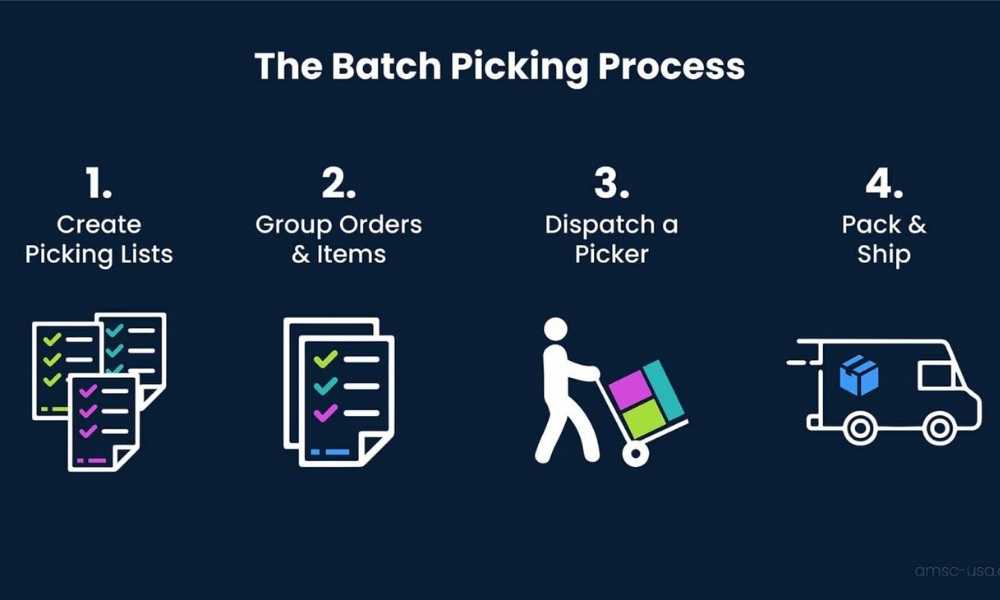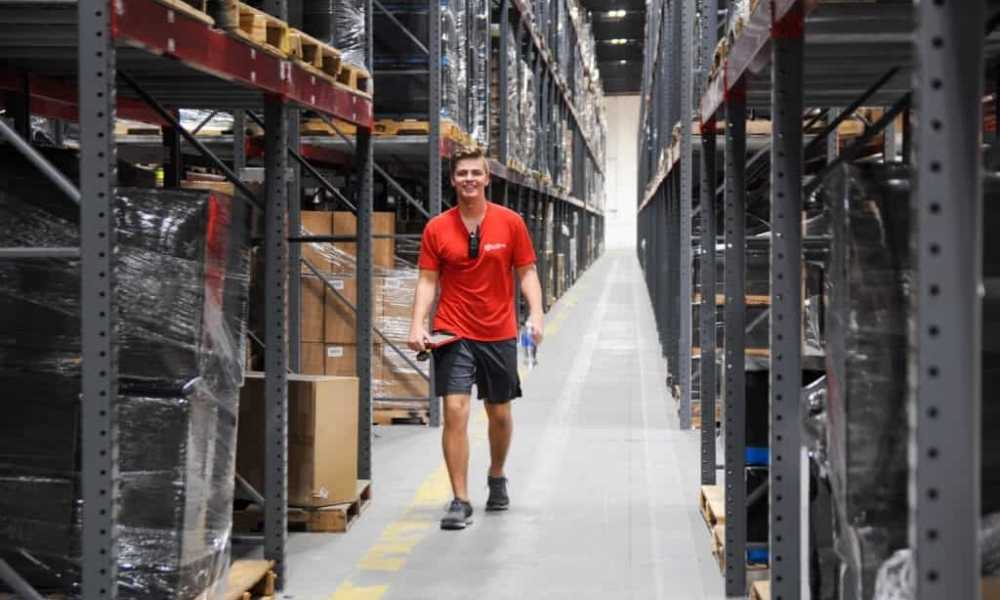
More Helpful Content
Pick to box is revolutionizing warehouse fulfillment. Workers pick goods directly into shipping cartons, eliminating packing stations. This guide provides distribution centers critical insights on implementing pick-to-box successfully. Learn fundamentals, techniques, pros and cons to maximize benefits while avoiding pitfalls.
Pick to box is an order fulfillment method where items are picked directly into their final shipping containers or boxes. The picker retrieves items for an order and places them into the designated box that will be shipped to the customer. This eliminates the additional steps of sorting picked items or transferring them to packing stations after selection.
The key steps in a pick-to-box workflow are:
👉 Read More: Rfid In Warehouse Management System: Definition And Example

Order picking, also known as order selection, is one of the most important warehouse activities as it initiates the order fulfillment process. It involves identifying, collecting, and grouping products to fulfill specific customer orders. There are several different order picking methods used in warehouses and distribution centers.
When it comes to order picking methods, there is no single right or wrong approach. Each standard picking technique can be well-suited for specific warehouse layouts, workflows, and operations. While these are the basics, they can potentially be used in conjunction with the pick to box method above.
Piece picking is a method used in warehouses to fulfill customer orders by selecting individual items or products from their storage locations, one by one. It involves picking single pieces of items rather than entire cases or pallets.
This method is commonly used for e-commerce, retail, and direct-to-consumer orders where each order may contain a mix of different products. Piece picking is labor-intensive but allows for accurate order fulfillment and customization, making it suitable for diverse product assortments and varying order sizes.
Batch picking is a warehouse order fulfillment method where multiple orders are grouped together into batches, and the picker collects all the required items for those orders simultaneously.
This approach increases efficiency by reducing travel time within the warehouse, as the picker gathers items for multiple orders in a single pass through the aisles. Once all the items in the batch are collected, they are separated and distributed to the respective orders.

Batch picking is particularly useful for optimizing the picking process in warehouses with a high volume of small, diverse orders, as it minimizes unnecessary movements and improves overall productivity.
Zone picking is a warehouse order fulfillment strategy where the storage area is divided into zones, and each picker is assigned to a specific zone. Instead of a single picker gathering all items for an order, different pickers collect items only from their designated zone. Once all zones are picked, the collected items are combined to complete the order.
Zone picking improves efficiency by minimizing picker travel time and congestion, especially in larger warehouses. It's effective for high-volume operations with a wide range of products. However, coordination among pickers and accurate inventory management are crucial for successful zone picking implementation.
Wave picking is a warehouse order fulfillment method that organizes and optimizes the picking process by grouping orders into waves. Each wave represents a specific timeframe during which orders are picked together. Instead of processing orders individually, pickers focus on a batch of orders within a wave.
This method enhances efficiency by reducing travel time and improving picker productivity. It's especially beneficial in warehouses with fluctuating order volumes throughout the day. Once all orders within a wave are picked, they are sorted and processed for packing and shipping. Wave picking helps streamline operations, enhance order accuracy, and meet customer demands effectively.
The pick to box model for warehouse picking has grown in popularity due to its potential to streamline processes and reduce labor. With pick-to-box, ordered items are picked directly into their final packaged shipping boxes or containers. This eliminates extra packing steps and saves time. However, implementing pick-to-box requires careful planning and upfront investments. As with any fulfillment approach, there are both pros and cons to consider.
EFEX will provide an overview of the key benefits as well as the potential drawbacks or challenges of adopting a pick to box strategy. By understanding the tradeoffs, managers can determine if making the switch to pick-to-box is advantageous for their specific distribution centers.
The potential for reduced labor is a major advantage of implementing a pick to box fulfillment strategy. By integrating picking directly into packaging, separate packing steps are eliminated. This means fewer warehouse workers are needed to complete the end-to-end order processing.
The ability to achieve faster order turnaround times is another key advantage of pick-to-box fulfillment. By picking directly into the final shipped packaging, the extra steps of consolidating picked items, transporting them, and then packing orders are eliminated.
Furthermore, With pick to box, the picker now has to learn both skillsets in one position. They must master quickly and accurately selecting items, but also on-the-fly decision making for packing. While pick-to-box combines two roles into one, it also combines all the training points from those two roles. once trained, the daily process is simplified since workers don't have to switch mindsets/locations between separate pick and pack steps.

Pick to box diverges from common picking approaches like batch, zone, and wave which aim to streamline selection by focusing a picker's efforts on a confined area. With pick-to-box, an extra task is introduced - selecting the right box or container for each order during the pick. This added complexity could potentially slow down fulfillment and increase chances for errors.
Additionally, keeping picking and packing completely separate allows for more specialized expertise. Dedicated packers can focus on choosing optimal boxes, inserts, and packaging methods per order. When pickers have to make these packaging decisions on the fly, it may detract from their core role of quickly and accurately retrieving items.
While pick to box can provide benefits, warehouses should weigh if added picker responsibilities could sacrifice some efficiencies gained from traditional picking approaches. The increase in multitasking could make excelling at each individual task more difficult.
Order picking is often one of the most expensive and labor-intensive processes in warehouse operations. However, businesses can transform the efficiency of their fulfillment with a robust warehouse management system (WMS). The right WMS solution enables companies to significantly increase throughput and productivity in their picking and overall warehouse workflows.
Here are some of benefits you can take when using WMS for pick to box method:
👉 Read More: All Cost To Rent A Warehouse
If pick to box seems like the right fit for your fulfillment operations after weighing the pros and cons, EFEX offers leading warehouse management system (WMS) solutions to help you implement and optimize this model successfully. Our experienced team can customize our WMS technology and approach based on your specific warehouse needs and order profiles to maximize the benefits of pick-to-box.
By leveraging Efex's robust WMS capabilities purpose-built for omnichannel fulfillment, you can achieve new levels of efficiency, accuracy, and speed with your integrated pick-pack processes.
Contact our logistics technology experts today to learn more about how we can help you transition to pick-to-box or refine your existing workflows. Invest in your fulfillment future by partnering with Efex for a WMS that optimizes productivity, visibility, and order fulfillment flexibility. Take the next step now towards supply chain success!


